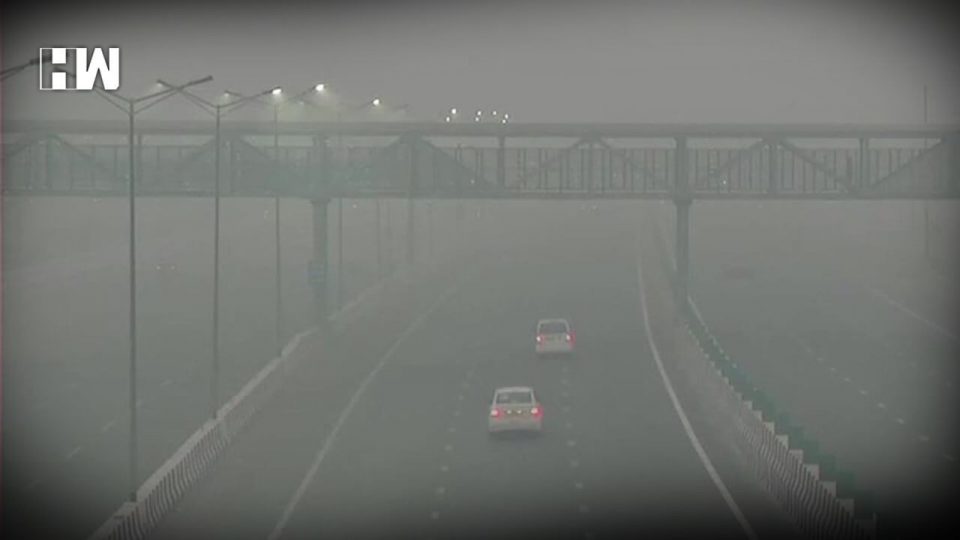The CPCB data says Delhi’s annual average PM 2.5 last year was 115 micrograms per cubic metre
NEW DELHI| Delhi post-Diwali has turned a powerhouse of toxic gas. The population breathes polluted air 11 times higher than what is considered safe by the World Health Organisation.
Delhi has become a major concern with the rise of the toxic in the air an analysis of average PM2.5 particle concentrations showed. Delhi air becomes a major concern as the levels reach concentrations up to 45 times as high as the global standards.
According to Central Pollution Control Board data, Delhi’s annual average PM 2.5 (particulate matter of 2.5-micron size) last year was 115 microgram per cubic metre while the WHO recommends this be kept under 10 micrograms per cubic metre.
PM2.5 are ultra-fine particles roughly 3% of the diameter of an average human hair. This air quality leads to the most harmful health effects, including respiratory distress and cardiovascular conditions. This air quality can lead to millions of premature deaths around the world every year.
“The WHO guideline is 10 micrograms per cubic metres for a reason. The levels we are recording round the year are not safe at all. That needs to be understood by policymakers,” Sagnik Dey, associate professor at IIT Delhi.
Till November 14 this year, the average is 97.7 micrograms per cubic metre based on data from the CPCB’s continuous monitoring stations. This cannot be compared with the CPCB’s average for last year because it may not have considered the same number of stations to calculate the average. The chronic health effects begin at annual mean concentrations are as low as 11-15 micrograms per cubic metre, according to the WHO’s air quality guideline document.
Each time the air quality varies. PM 2.5 concentrations ranged from 250 to 450 micrograms per cubic metre, people worry for their health and rush to wear masks or opt to stay indoors. Health impacts can be curbed only if the annual average concentrations are reduced drastically through various interventions.
The WHO has devised intermediate targets for countries that are higher than the 10 micrograms per cubic metre, which “have been shown to be achievable with successive and sustained abatement measures”, says the WHO air quality guideline document.
“Health evidence shows that most of the health effects of air pollution premature deaths and illness occur at a level that is much lower than the annual average level we record in Delhi. Multisector action plan has to reduce year-long exposure to meet health-based guidelines,” said Anumita Roychowdhury, executive director, Centre for Science and Environment.
Also Read: Use of public transport would be ‘major step’ towards curbing pollution: Kejriwal
Spikes are equally important to be controlled because a PM10 concentration of 150 micrograms per cubic metre would translate into roughly a 5% increase in daily mortality, according to the WHO.
Experts hope that the National Clean Air Programme of the Centre launched last year, which aims to reduce PM2.5 pollution by 20 to 30% over 2017 levels by 2024 in 102 cities, is strictly enforced. As of today, only 102 city action plans have been developed but they are yet to be implemented, with the plans lacking regional focus and being limited to the municipal limits of each city.
National capital CM Arvind Kejriwal to control the deteriorating air quality in the national capital started the odd-even scheme. This is the 3rd attempt of the odd-even implementation by the Delhi government, aiming to curb domestic carbon emission. CM has also declared holidays for schools are colleges ask them to be indoors. In schools, they have distributed breathing mask and have requested to scan the burning of farms in Haryana and Punjab to curb the pollution.
In recent Government is taking possible steps to curb the pollution yet the air quality remains the same at times its decrease but still under threat. Government has also said they will be extending the odd-even scheme if possible examining the air quality to stabilize the quality.
Delhi CM Arvind Kejriwal: As per weather forecast, air quality in Delhi to improve in the next 2-3 days. If the air quality doesn't improve, we will take a decision on extending Odd-Even vehicle scheme on November 18 pic.twitter.com/S9J7jrZPSD
— ANI (@ANI) November 15, 2019
As an independent media platform, we do not take advertisements from governments and corporate houses. It is you, our readers, who have supported us on our journey to do honest and unbiased journalism. Please contribute, so that we can continue to do the same in future.

